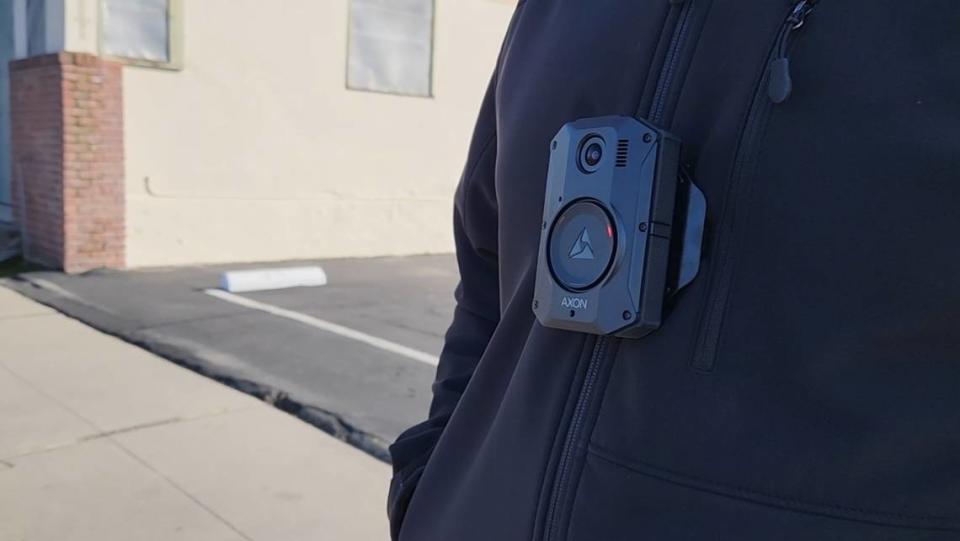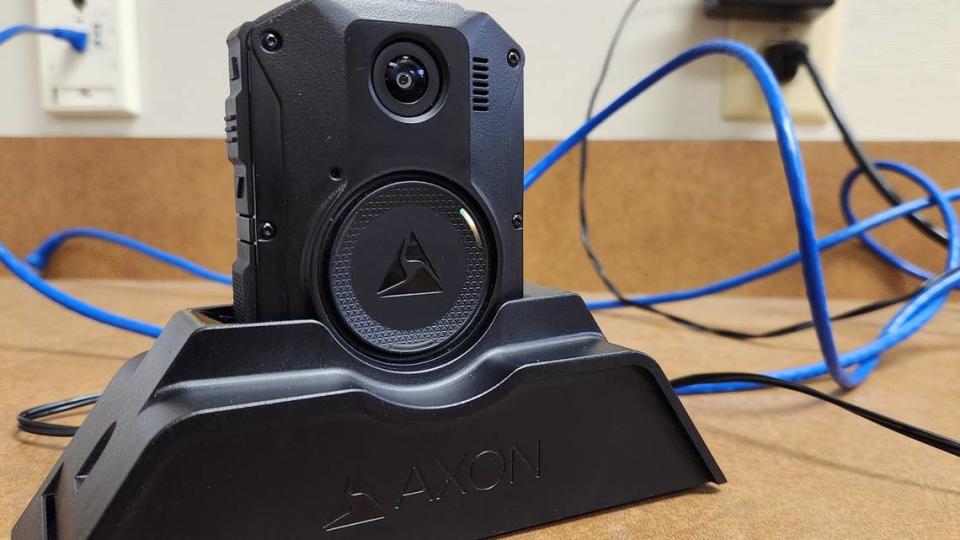Sheriff to add body cameras to Fresno deputies. What’s the cost, and potential pitfalls?
The Fresno County Sheriff’s Office looks to join more and more agencies this year in putting body cameras on its deputies, especially those who deal the most with the public, according to Sheriff John Zanoni.
But some worry that outfitting patrol could be an expense that puts equipment above personnel after years of cuts to staffing. Others argue the cameras leave room to violate people’s privacy without strict guidelines from lawmakers.
Zanoni said he began looking into grant funding a couple of years ago to help pay for them, and the county was passed over once before being awarded $430,000 in the latest go.
That doesn’t cover the cost of 215 cameras, the video storage and other expenses related to the equipment. They’ll be given to the roughly 150 deputies who work patrol.
Zanoni said he’ll be looking to pull about $2.5 million over five years from the sheriff’s office budget, which would need approval ultimately from the Board of Supervisors.
The benefits outweigh the costs, Zanoni said.
“As far as drawbacks, you know: having to turn it on, having that extra piece of equipment — that’s always a drawback because we all have a lot of equipment now as it is,” he said. “But other than that, I really don’t see any drawbacks. I see a lot of the positives.”

Writing police reports
Cameras worn by officers have become more common nationally than a decade ago and often draw attention to questionable arrests and use-of-force.
Zanoni said that footage can be used to hold officers accountable in unprofessional interactions with citizens, or clear them if they acted within policy.
As it stands now, deputies use audio-recording equipment or good old-fashioned pen and paper to take notes at a crime scene or while interacting with the public, according to Zanoni.
Deputies would be able to use the cameras, which includes a transcription service, and could cut down on the time they spend transcribing notes into reports, he said.
“We’ll be able to hopefully streamline some of our investigations and be able to handle complaints in a much more efficient, timely manner,” he said.

Fresno Deputy Sheriff’s Association
Body cams would be an overall positive but they do come with some reservations, according to Eric Schmidt, the president of the Fresno Deputy Sheriff’s Association union.
The sheriff’s office hired 11 deputies last year, according to the spokesperson, but that’s still 65 below the pre-Great Recession number of 495 in 2007.
Spreading that nearly $3 million over about five years makes it easier to swallow, Schmidt said, but it’s a concern.
“Now we’re supplementing equipment, which we never had, over hiring staff. You can only cut that dollar up so much,” he said. “I think the public deserves to have more personnel on the streets responding to their needs.”
Cameras and civil rights
The videos of police interactions can be a benefit to holding officers accountable but municipalities should have firm guidelines on who has access to them and what the public can see, according to Allyssa Victory, a staff attorney for the Criminal Justice Program at the ACLU of Northern California.
Municipalities should also write strict policy guidelines related to facial recognition software, storage security and other potential civil rights issues, she said.
“A lot of these come with racial disparities,” she said. “(Cameras) are common enough around the state that they should be regulated.”
The most policed communities are routinely underprivileged and home to people of color, she noted, leaving them vulnerable to potential rights violations.
Body cameras are meant to hold police accountable and not to provide another means of surveillance by police officers, she said.
It’s also the duty of local leaders to hold public meetings to hear from residents over potential policies, she said. That should be part of an educational campaign, informing residents that cameras are coming.
The state’s moratorium prohibiting facial recognition is approaching its sunset, but Assemblymember Lori Wilson, D-Suisun City, introduced Assembly Bill 1034 last month to renew it with a 10-year prohibition.
Agencies need extensive guidelines to ensure that cameras are not used against the public, according to Adam Schwartz, the senior staff attorney with Electronic Frontier Foundation, a San Francisco-based nonprofit striving to defend digital privacy, free speech and innovation.
“Without these safeguards, the body-worn cameras will be a tool for the police to surveil the public and not a tool for the public to hold police accountable,” he said.
Those guidelines should go as far to not allow officers to see use-of-force or other videos before providing a statement to investigators, creating an even playing field for the complaining citizen who will likely not be shown the video, he said. The video could allow an officer to change their story, he said.
Agencies also should not be allowed to use an “ongoing investigation” to withhold video of critical incidents, he argues.
He pointed to the recent example in Nashville, where authorities released the video of the beating by officers that killed Tyre Nichols, as a good example. The video was made public 17 days after the killing.
Industry norms and juries
Zanoni said he’s still developing policies for deputies and will follow California law.
He said he started looking at investing in cameras after he noticed more San Joaquin Valley agencies were adding them.
Tulare County brought them online in 2016, the same year as Clovis Police Department, each agency said.
Clovis Lt. Jim Koch noted the costs to store the film and add another piece of equipment to each patrol officer as potential downsides, but said they were outweighed by the benefits of being able to immediately follow up with a citizen complaint.
“It’s just an industry standard at this point,” he said. “It’s good to be able to go back immediately if there’s an accusation of wrongdoing.”
Fresno police tested cameras in 2014 and added them the next year, according to a department spokesperson. Other agencies, like Kings County, don’t have them.
Zanoni said the footage can, of course, be used in a trial.
“A lot of times juries expect body-cam footage, because it has really become an industry standard,” he said. “And so that’s an important component of how we keep people safe in our community, and how we prosecute criminals.”
The office has been testing the cameras and looks to have them on the street by the end of the year.

